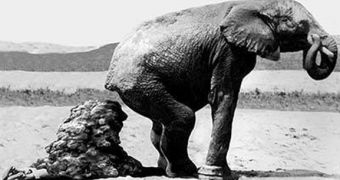Fecal bacteria can get into the watersheds from various sources, such as the wastewater treatment outfalls, and diffuse sources like runoff from fields where livestock waste has been employed for fertilization.
Finding the source of the bacteria pollution is necessary to apply appropriate control practices to reach the water-quality standards required by the Clean Water Act.
But identifying the source of the fecal contamination can be quite tricky. Microorganisms could help and by employing multiple methods, researchers have been able to track down the origin of fecal pollution in streams, with a significantly higher certainty than with a single method.
U.S. Geological Survey (USGS) team made its research within the Plum Creek watershed in south-central Nebraska. High levels of fecal bacteria turned about 60 % of Nebraska streams impaired by federal and state environmental laws in 2004.
In a 2001 monitoring made by the Nebraska Department of Environmental Quality revealed Plum Creek as the most contaminated tributary to the middle reaches of the Platte River. Two fecal source-tracking tools were employed for the contaminated water and stream-sediment samples were collected from the Plum Creek watershed. The DNA of the bacteria collected in water and sediment samples were compared to the DNA of bacteria from known fecal sources, or by focusing on a "marker" within the DNA linked to a specific fecal source.
The research detected cattle and wildlife as the main sources of fecal bacteria responsible for the water contamination in the area. "While the two methods led to similar overall interpretations, using both methods together gave us a clearer picture of potential sources and the strengths and weaknesses of the methods used," said lead author USGS Hydrologist Jason Vogel. "Additionally, results from bacteria found in stream-bottom sediment also suggest that different tools for tracking fecal contamination may have varying relevance to the more specific goal of tracking the sources of E. coli in water or soil within the watershed."

 14 DAY TRIAL //
14 DAY TRIAL //